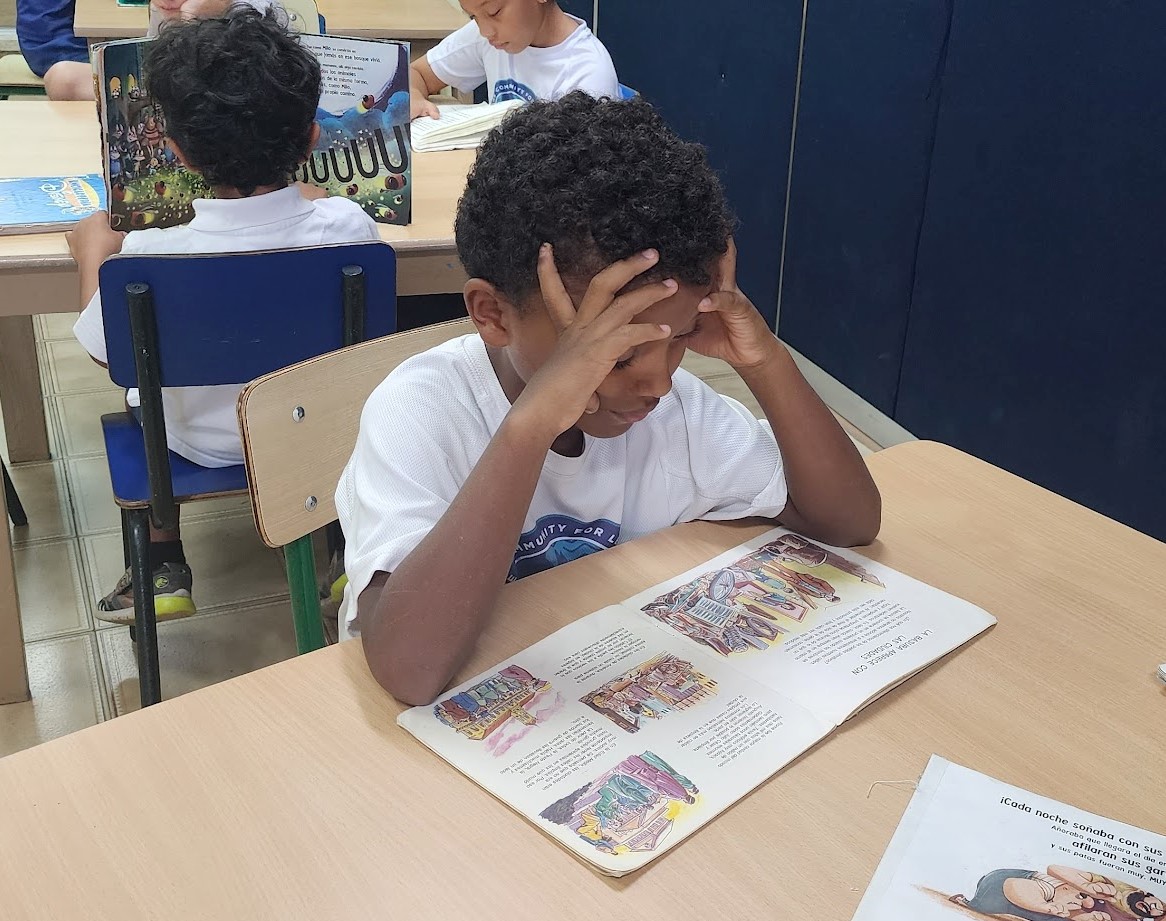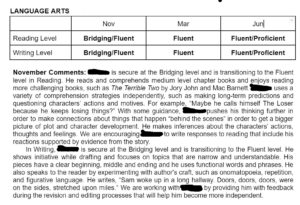A Case Study: Empowering Students Through a Gradeless Approach.
 At The Community for Learning (TCFL) we use a gradeless approach to assessment in elementary. Instead of using traditional grades, teachers track each student’s learning journey along continuums of skill development, which they then describe in narrative reports.
At The Community for Learning (TCFL) we use a gradeless approach to assessment in elementary. Instead of using traditional grades, teachers track each student’s learning journey along continuums of skill development, which they then describe in narrative reports.
This innovative method frees our young learners from worrying about grades, allowing them to embrace challenges and develop a love of learning. However, when students reach 7th grade, for reasons beyond our control, they are introduced to conventional grading. For 21 years now, we’ve witnessed the transition from gradeless to graded learning and we’ve seen the harm it does. Almost overnight, students become anxious; their willingness to take risks diminishes, and the question, “Does this count for my grade?” comes up constantly. While I frequently write about strategies we use to fight the negativity of grades in secondary education, I haven’t written about the power of gradeless classes in elementary. This post is a first step in correcting that.
When students move from traditional elementary schools to TCFL, we see the effects of going gradeless on their improved self-esteem, their willingness to take risks, and their increased love of learning. Parents come in to tell us how inspiring it is to see their children becoming curious about the world around them, asking deeper questions, experimenting to find answers, and developing a love of reading.
One of those parents is Elizabeth Mendez, a new teacher at TCFL who told me about the amazing experience she had with her son, Max, when he moved from a traditional graded school to our gradeless elementary school environment. Her story is an important one, and she gave me permission to share it with you.
From Grades to Growth:
Elizabeth explains that Max’s previous bilingual school relied heavily on grades, and Max was very aware of what those grades meant. They inadvertently made him feel like a failure because of his struggle with reading and English. His lack of self-confidence and motivation hindered his progress and, because he felt he didn’t fit in, he dreaded going to school.
However, Elizabeth noticed an impressive change in Max’s attitude and well-being within a month of joining TCFL. Max was welcomed, accepted, and free to be himself. He no longer felt judged for not being able to read or speak English. The teachers treated him differently — they supported him, recognizing his strengths and encouraging him to give his best. Since teachers set the tone of the class, his peers now treat him differently too; they accept him and he no longer feels left out.
By allowing students to share their own thoughts about their glows and grows, TCFL cultivates a sense of ownership and self-awareness among its students. Because the main focus is on strengths, students develop a growth mindset and realize that they are constantly learning. When I asked Max about his reading, he exemplified the growth mindset when he said, “I’m reading better now, but there’s always more to learn.”
Shifting the Focus to Strengths and Growth:
In reflecting on why there was such a change in Max, Elizabeth feels that it’s much to do with the way the traditional grading system focuses on what a student can’t do, emphasizing deficiencies and shortcomings. However, she doesn’t feel this is the fault of the teachers, but rather the fault of the system and what it focuses on. When a school uses grades, students are automatically being ranked and compared to each other, causing those at the bottom of that system to feel shame. Elizabeth says, “There’s nothing worse than seeing your six-year-old child feel ashamed because he doesn’t think he’s good enough.”
At TCFL a different language is spoken — one that celebrates what students can do and identifies the next steps in their learning journey. Through a continuum of reading, students can see where they are in their learning and what they need to do to progress to the next level. Students set goals for themselves and work towards meeting those goals. Rather than being compared to others, students compare what they can do now to what they could do before and celebrate the improvement. This approach promotes a growth mindset, high self-esteem, and a positive attitude towards learning.
A Culture of Reading:
Elizabeth attributes much of Max’s progress to the strong culture of reading at TCFL. Surrounded by an abundance of books in the classroom, Max has free choice in the books he wants to take home. If he chooses a book that he can’t read alone, she helps him with it. He knows that there are some books that he can read on his own and others that he needs help with, but that eventually he’ll be able to read them independently, as he develops his skills.
Max’s Journey:
When I ask about his experience at TCFL, Max tells me how happy he is, saying, “I have friends here.” When asked about the books he likes to read, he says, “I like books about family and about true things. I read better in Spanish but I’m learning to read in English.” And finally, when I ask him if he likes reading, he says, “Yes. Now I do. There are still lots of words I don’t know, but I’m learning and the teacher helps me. I keep getting better and better.” And he smiles at me.
Elizabeth Mendez’s experience with her son Max exemplifies the positive impact of a gradeless approach to education. By shifting the focus from grades to individual growth, fostering a supportive classroom community, and nurturing a love of reading, TCFL empowers students to take charge of their education and instills in them a lifelong love of learning. The gradeless approach in education allows us to inspire, uplift, and celebrate the unique journey of each student.


Leave a comment